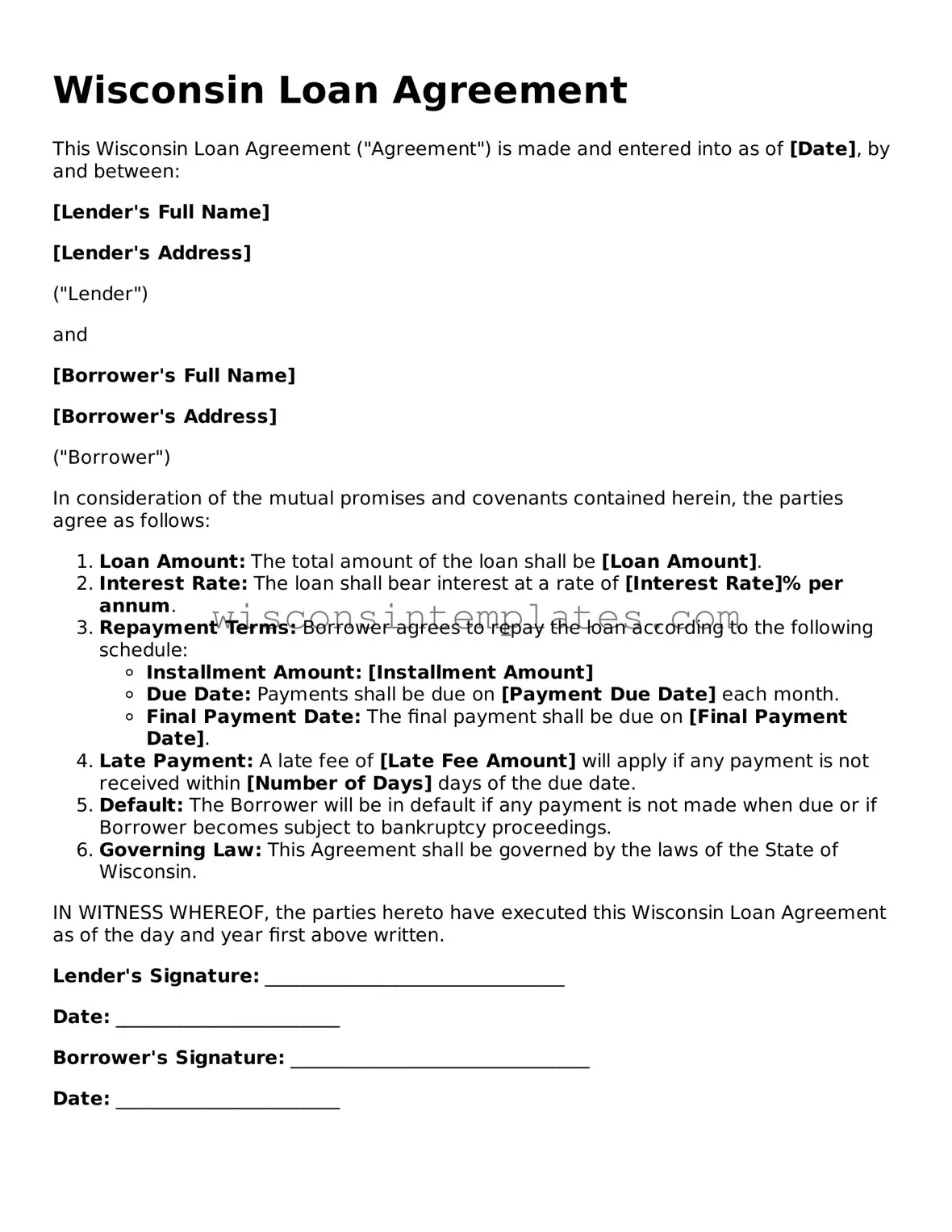Legal Loan Agreement Form for Wisconsin State
A Wisconsin Loan Agreement form is a legal document that outlines the terms and conditions under which a loan is provided between a lender and a borrower. This form serves to protect both parties by clearly defining repayment terms, interest rates, and other essential details. Understanding this agreement is crucial for ensuring a smooth lending process.
Launch Editor Now
